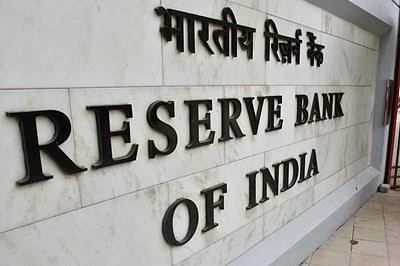A suggestion for RBI’s Regulations Review Authority

V.P. Nandakumar
MD & CEO, Manappuram Finance Ltd
To promote the next level of financial inclusion, let us remove restrictions on opening new branches that currently apply to gold loan NBFCs
Recently, the Reserve Bank of India (RBI) set up of a Regulations Review Authority (RRA 2.0) to review its regulations internally, and in consultation with other stakeholders. The RRA will focus on streamlining regulatory instructions and reducing the compliance burden of regulated entities by simplifying procedures and reducing reporting requirements. Accordingly, the RBI invited leading industry bodies such as CII, FICCI and ASSOCHAM to offer their suggestions following which these bodies called upon their members to list out such issues.
At Manappuram, we responded by pointing to a long-standing concern, the fact that gold loan focused NBFCs with more than 1,000 branches still require prior approval from the RBI before opening a new branch anywhere. The rule came into force sometime in FY 2012-13, a time when there was real concern among policymakers about rising gold imports and the widening current account deficit (CAD). The feeling then was that gold loan NBFCs were somehow contributing to the import surge. That impression was later dispelled by the RBI itself when the working group it had appointed to study all these issues related to gold and gold loans (the K.U.B. Rao committee) submitted its report in 2013. The Rao Committee report categorically stated that “there is also a need to increase monetization of idle gold stocks in the economy for productive purposes. Encouraging loans against the collateral of gold for productive purposes may be a way to do this.” It observed that the financial performance of the gold loans NBFCs and their borrowings from the banking system have no immediate systemic implications for domestic financial stability arising from the interconnectedness of gold loans NBFCs and the banking system.
However, the requirement to obtain prior approval from RBI before opening new branches continues to be in force to this day. What’s even more surprising is that there are 9,000+ NBFCs in India regulated by RBI, but this restriction applies only to three gold loan focused NBFCs, viz. Manappuram Finance, Muthoot Finance and Muthoot Fincorp. That’s because there are only three gold loan focused NBFCs that have more than 1,000 branches.
It is well-known that India’s economic growth is constrained by the capital crunch faced by its financial system which impairs its ability to provide much-needed credit for economic activities. On the other hand, the leading gold loan NBFCs don’t face a capital crunch but they must reckon with artificial restrictions when they step up to address the yawning gap in the supply of credit. That leaves vulnerable sections of society at the mercy of moneylenders and pawnbrokers. Anyone familiar with the gold loan business would know that gold loan NBFCs cater mostly to the marginalised sections who lack access to banks, especially in rural and semi-urban areas. More than two-thirds of the gold loans given by NBFCs are microloans by nature, averaging amounts of less than Rs.50,000. And when you have a time-consuming process of prior approval for each new branch we wish to open, it becomes a bottleneck to the flow of credit to the unbanked sections of society. They are left with no alternatives but to continue to depend on the unorganised sector whose loans come with high interest rates and adverse terms.
On the other hand, institutional gold loan providers (banks and NBFCs) are regulated by the RBI and provide a fairer and more transparent loan against gold jewellery, thereby drawing customers away from non-institutional lenders operating without regulatory oversight. But then, banks face the challenge of limited reach. Also, with multiple products vying for attention, small ticket gold loans of short tenures hold little attraction for them. Gold loan NBFCs face no such constraints and thanks to their low operating costs, are well placed for last mile delivery of credit. They have won recognition as pioneers who have professionalized this traditional activity and introduced transparency, technology, and scale to the business. They were instrumental in reducing the dominance of the unorganized players in gold loan and thus paving the way for the rest of the banking sector to follow.
Over the years, we have seen anecdotal evidence that whenever gold loan NBFCs open a new branch in a semi-urban or rural location (where other banks and NBFCs are not present), the mere entry into the market causes a drop in the interest rates that moneylenders of the locality charge. What happens is that once an organised sector gold loan lender enters a new territory, it begins to pose stiff competition to the moneylenders and pawnbrokers of the area who ruled the roost till then. Therefore, an unintended consequence of policies that curtail branch expansion by gold loans NBFCs is that it effectively strengthens the hands of the unregulated local financiers at the cost of marginal borrowers.
Gold loan NBFCs deserve encouragement from the policymakers to lead the way for institutional lenders to gain market share from the unorganised moneylenders who control two-thirds of the gold loan market even today. Gold loan NBFCs have a unique business model, funding small and marginal borrowers, who would otherwise end up borrowing from moneylenders and loan sharks. These borrowers would rarely have a regular source of income or possess documentary evidence to prove creditworthiness. Unlikely to have a valid credit score, they face difficulties in getting loans from banks and other NBFCs. Gold loan NBFCs not only create a credit culture among the marginal borrowers but also establish a credit history, enabling them to move up the ladder and gain access to banks and other NBFCs in due course. Accordingly, the RBI’s Regulations Review Authority should seriously consider recommending an easing of the restrictions on opening new branches by gold loan NBFCs to promote financial inclusion in every nook and corner of the country.
Pic Courtesy: google/ images are subject to copyright








